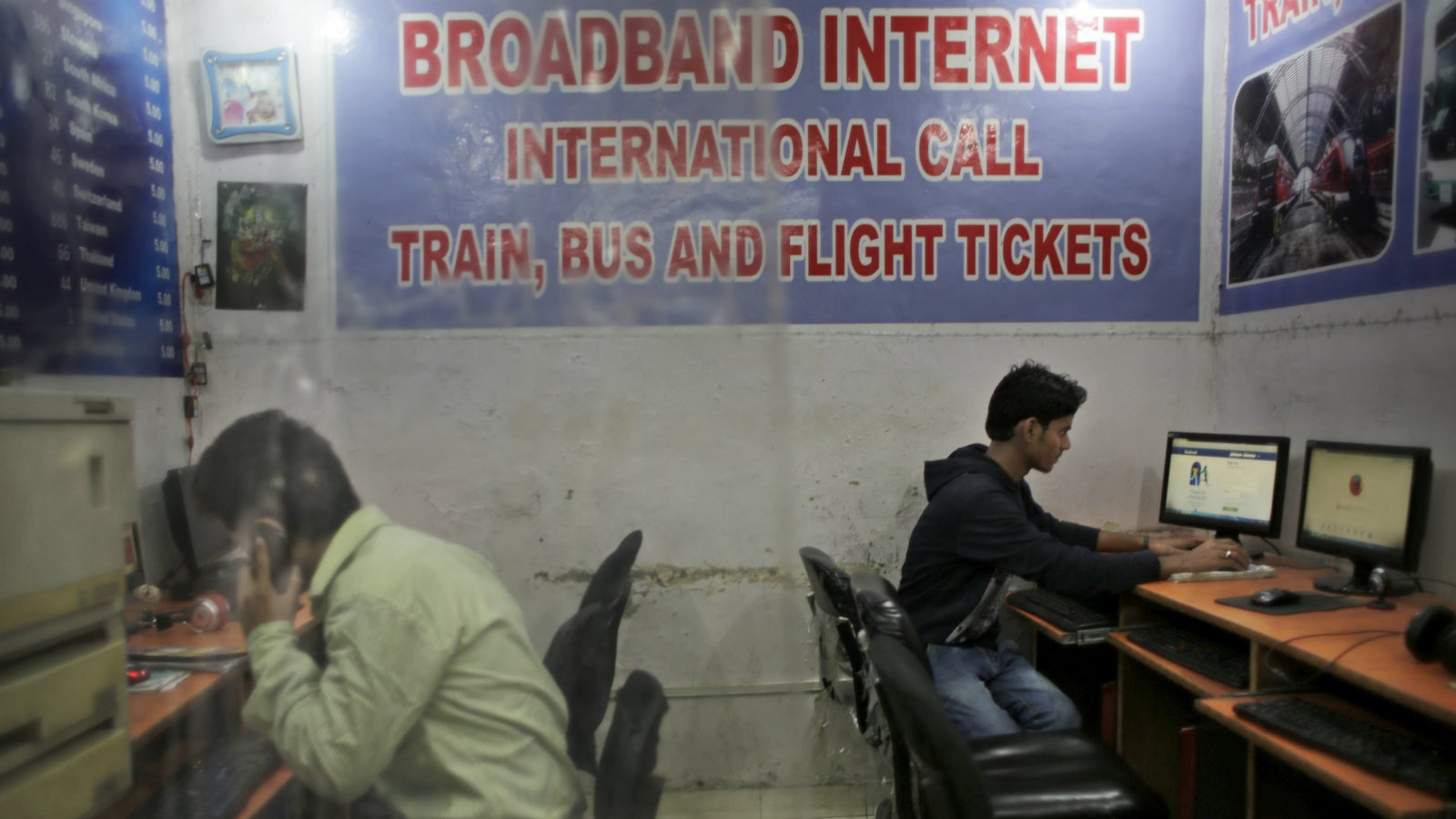India’s plan to connect thousands of its villages to the internet is finally moving up a gear
India is gearing up for a massive digital transformation of its vast hinterland.


India is gearing up for a massive digital transformation of its vast hinterland.
In three years from now, the Narendra Modi government plans to lay down the necessary infrastructure—including one million kilometres of optical fibre network—to bring digital connectivity to the country’s 239,000 gram panchayats (village-level administrative units).
As part of this rollout, the government on Nov. 13 announced the second and final phase of the BharatNet project—the flagship programme that will provide broadband connectivity across India’s villages—at a cost of Rs34,000 crore. The first phase will be completed by December this year and will cover 100,000 panchayats in the country.
Under the programme, the government will provide optical fibre to telecom players at 75% lower tariffs, which can be utilised to provide affordable services to rural users. “We expect telecom operators to provide at least 2 megabit per second (Mbps) speed to rural households,” India’s telecom secretary Aruna Sundararajan said on Nov. 12.
By bringing internet access to many far-flung hamlets of Asia’s third-largest economy, the project is estimated to add over Rs4.5 lakh crore ($68 billion) to its GDP.
Slow start
Initiated by the Manmohan Singh government in 2011 as the National Optical Fibre Network, the project had an excruciatingly slow start, adding only 350-odd kilometres of network by 2014.
In 2015, the Modi government renamed it BharatNet, with the target of turning it into the world’s largest rural broadband connectivity project using optical fibre. Since then, some 267,000 km of optical fibre has been laid in 121,429 village panchayats, mostly executed by the state-run Bharat Broadband Network (BBNL) through three public sector units—BSNL, Power Grid Corporation, and RailTel. In all, wi-fi hot spots for up to 100 million people will be provided, of which 15,000 hotspots are already in place.
“When the project started it didn’t take off as planned…It was no fun for anyone,” India’s telecom minister Manoj Sinha said on Nov. 13. ”BharatNet won’t be a medium to generate money, it’s not a business, it’s a medium for broadband penetration under the PM’s Digital India initiative.”
To the villages
Over the past few years, there’s been a tremendous expansion of internet access in India, mostly driven by cheap smartphones and affordable mobile internet plans. The country’s smartphone-using population is expected to touch 530 million by 2018, while the total number of internet users is currently pegged at between 450 million and 465 million, the world’s second-largest such user base.
Yet, digital access remains poor in India’s villages, which represent a large, untapped business opportunity. Now, companies are making a beeline to use BharatNet to fill that gap.
On Nov. 12, Reliance Jio and Bharti Airtel, India’s largest mobile service provider, paid BBNL, the provider of fiber in the first phase, to take connectivity to over 30,000 villages each. Others like Vodafone and Idea Cellular are also expected to join in. The government is offering $550 million in subsidies to private providers joining the programme as many areas may not be commercially viable.
“India, at present, has 38,000 wi-fi hotspots. Under BharatNet phase 2, around 600,000 to 700,000 hotspots will be added with 2-5 hotspots in each panchayat. Some of the hotspots may not be commercially viable initially. So, we will provide viability gap funding of around $550 million to telecom operators,” Sundararajan said.
Some of the world’s largest tech companies are working to bring rural India online. Google, for instance, is currently partnering with the government to roll out Google Loon, a communication network using large balloons in the earth’s stratosphere. This, too, is specifically to provide internet connectivity to Indian villages.